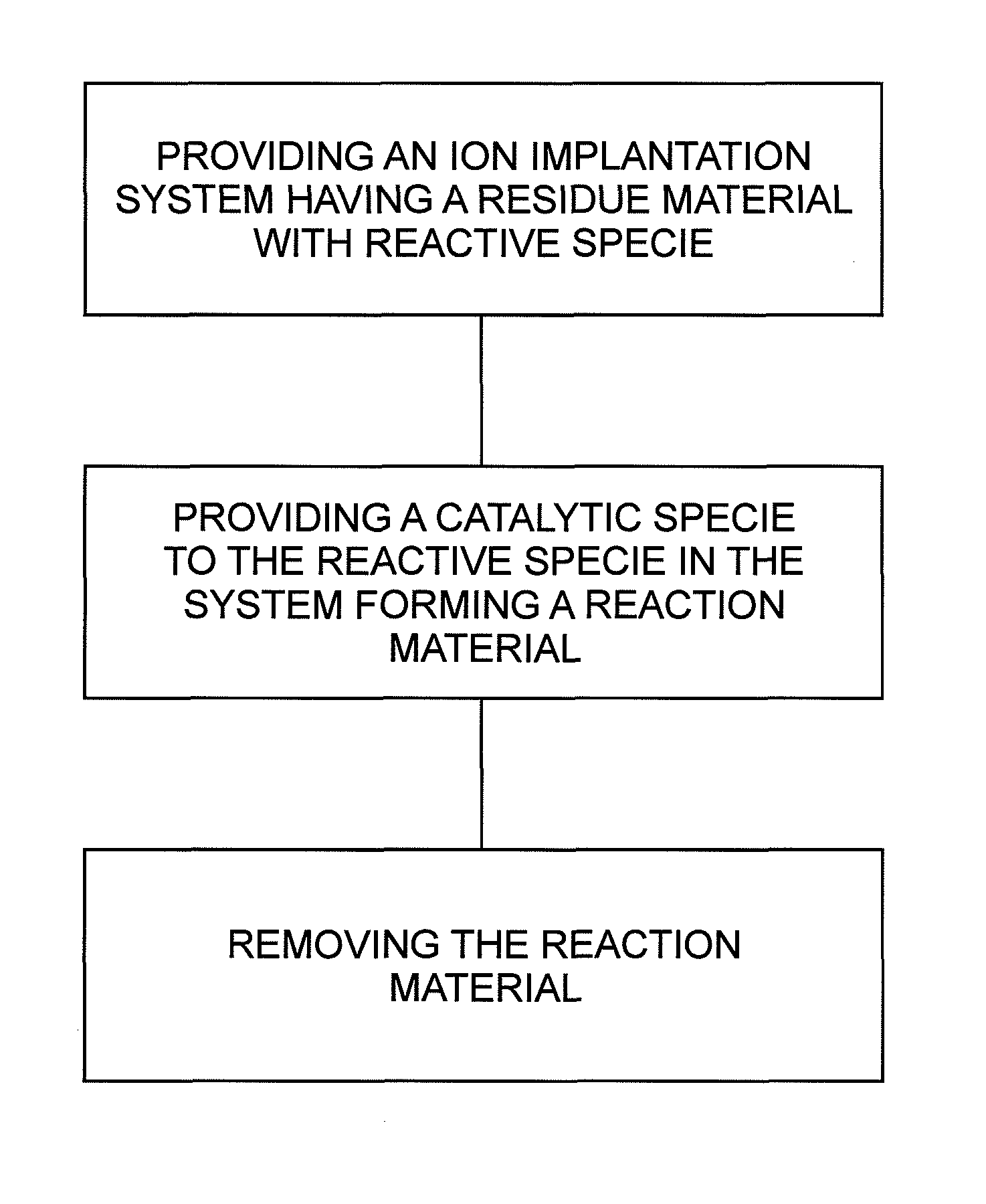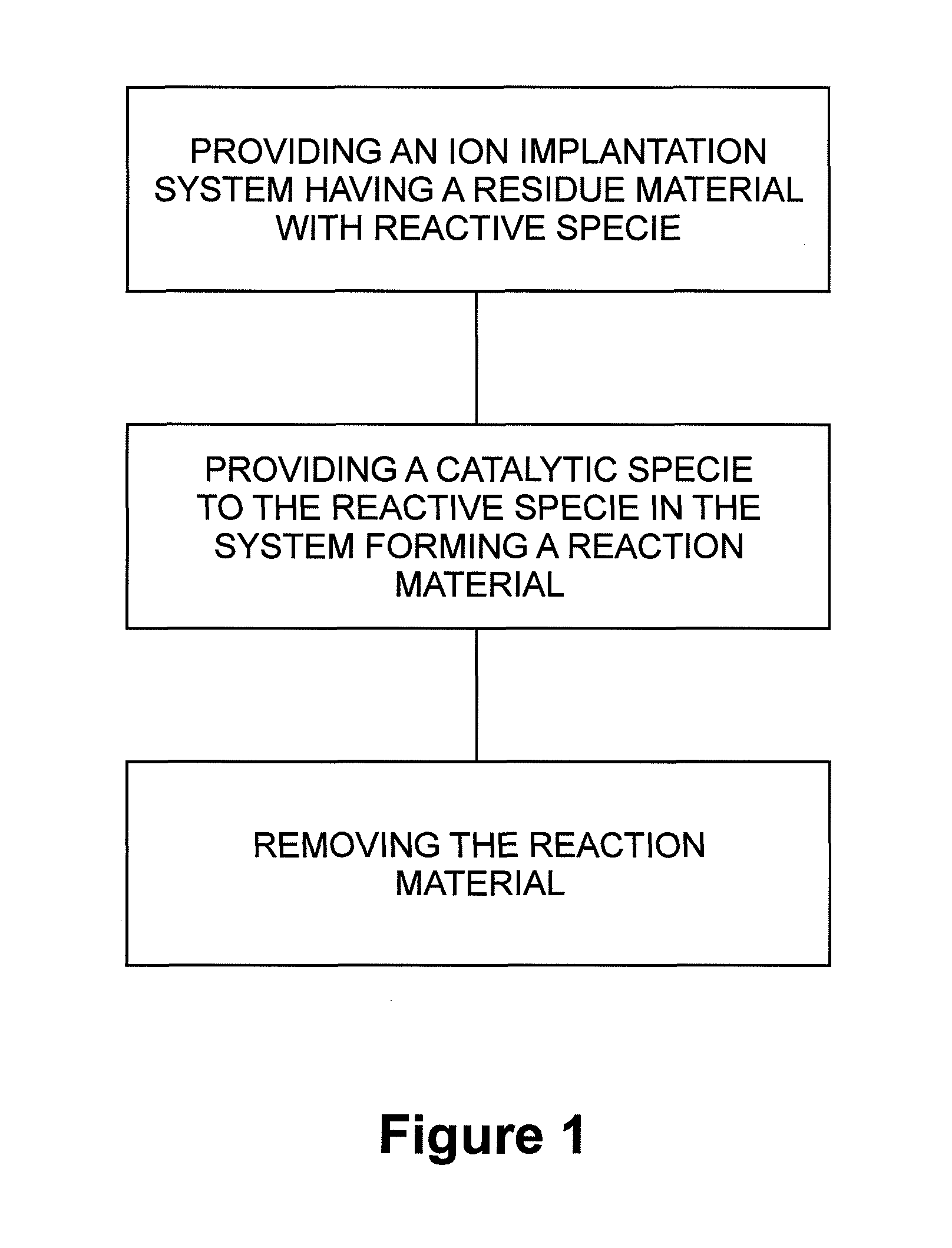Method for extending equipment uptime in ion implantation
a technology of ion implantation and equipment uptime, which is applied in the field of semiconductor manufacturing, can solve the problems of reducing the productivity (wafer throughput) reducing the efficiency of the implant tool, and reducing the performance of the nmos transistor. the effect of service life and performan
- Summary
- Abstract
- Description
- Claims
- Application Information
AI Technical Summary
Benefits of technology
Problems solved by technology
Method used
Image
Examples
Embodiment Construction
[0026]The invention comprises an improvement in cleaning of carbon residues from semiconductor wafer processing equipment, such as, an ion implantation system, wherein the carbon residue is contacted with one or more reaction species in the presence of a reaction promoting or catalytic species. The standard method used for B18 cleaning is has essentially no affect on carbon cluster residues. That is flourine F* components generated in the plasma from NF3 is not known to remove the residue build up. When B18 residue is deposited on top of or underneath carbon cluster residues and a standard cleaning recipe run, a reasonable clean was achieved. The only difference being the addition of boron hydride to the system. From an RGA analysis of the B18 clean, the boron residues are removed from the system as BF3. This byproduct of the boron clean is a so called “Lewis acid” (electron density acceptor) that is known to catalytically activate aromatic pi electron system, such as those found in...
PUM
| Property | Measurement | Unit |
|---|---|---|
| depths | aaaaa | aaaaa |
| depths | aaaaa | aaaaa |
| depths | aaaaa | aaaaa |
Abstract
Description
Claims
Application Information
 Login to View More
Login to View More - R&D
- Intellectual Property
- Life Sciences
- Materials
- Tech Scout
- Unparalleled Data Quality
- Higher Quality Content
- 60% Fewer Hallucinations
Browse by: Latest US Patents, China's latest patents, Technical Efficacy Thesaurus, Application Domain, Technology Topic, Popular Technical Reports.
© 2025 PatSnap. All rights reserved.Legal|Privacy policy|Modern Slavery Act Transparency Statement|Sitemap|About US| Contact US: help@patsnap.com


